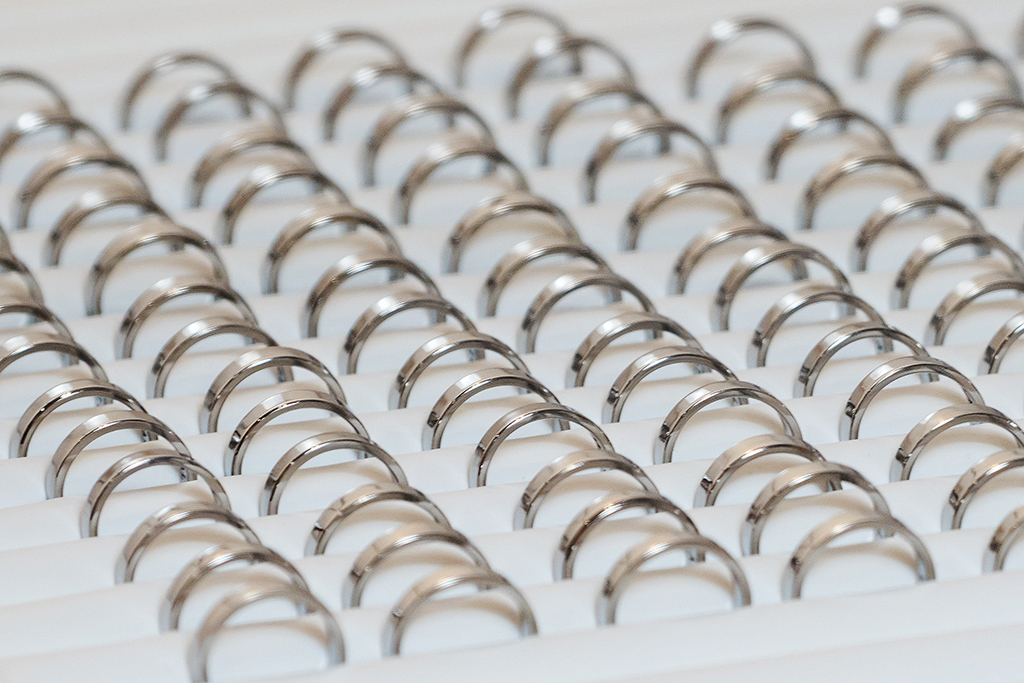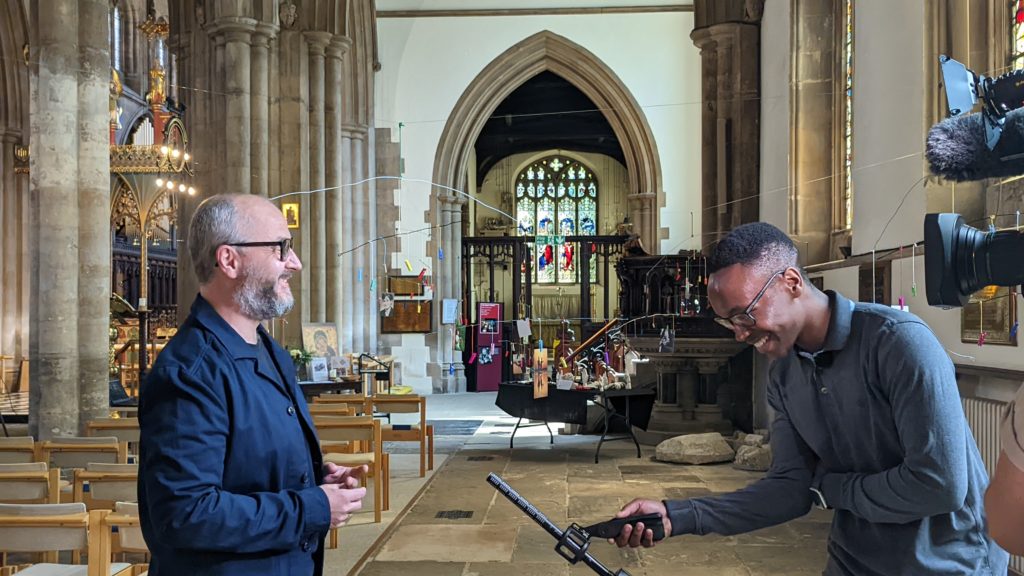Blunt Blades
Artists & Associates
Blunt Blades was an exhibition at The Higgins, Bedford, which recycles police-confiscated knives into art.
The concept has been eight years in development by Arabel Lebrusan, an ethical jeweller who was inspired to complete this project when Bedfordshire Police presented her with three crates of confiscated knives and other sharp artefacts back in October 2013.
The exhibition consists of 275 rings cast in metal recycled from the confiscated weapons. The bands represent the number of knife homicides in England and Wales from 2019 to 2020. They are also created in shapes and sizes that symbolise the percentage of deaths that were men, women, and children.
This poignant visual work ties into Blunt Blades Exchange, a socially engaging art project organised by Lebrusan earlier in 2021. The programme saw more of the police-confiscated knives repurposed into rings, then gifted to nine women whose lives have been changed irrevocably by knife crime.
Through a series of conversations, Arabel and the participants explored the meanings and associations of the rings, working together to personalise them with designs that draw primarily on themes of healing and empowerment.


Arabel was a fomer studio holder at Bedford Creative Arts and BCA has encouraged her to deliver this amazing project especially through the difficulties brought about through the pandemic.
Hosted by The Higgins Bedford, the display functions to interrogate whether an object’s meaning can be re-established through material transformation and contextualisation.
The show presents seven new works in a variety of mediums, including photography, audio, sculpture and, of course, jewellery.
The project was supported by the Women’s Support Centre Surrey and Quiet Down There, a not-for-profit organisation that encourages individuals to articulate their unique cultures through artistic mediums. Like the Blunt Blades exhibition, Blunt Blades Exchange questions the meanings associated with a material and explores what happens to those narratives when the material itself is transformed.
“Objects have the potential to hold memories. I’m fascinated by this idea that matter can vibrate, communicating with us as human beings; with the ways materials carry inherent meanings and how those meanings can be reshaped,” Lebrusan explains.
“Since the day I received the confiscated knives eight years ago, my mind has been occupied with the idea of transforming the metal from these objects into works that could evoke other emotions. What makes a kitchen knife become a deadly weapon? What makes a deadly weapon become a one-of-a-kind jewel? What makes that one-of-a-kind jewel become a trophy or a tool for healing?”
Image courtesy of Arabel Lebrusan.




